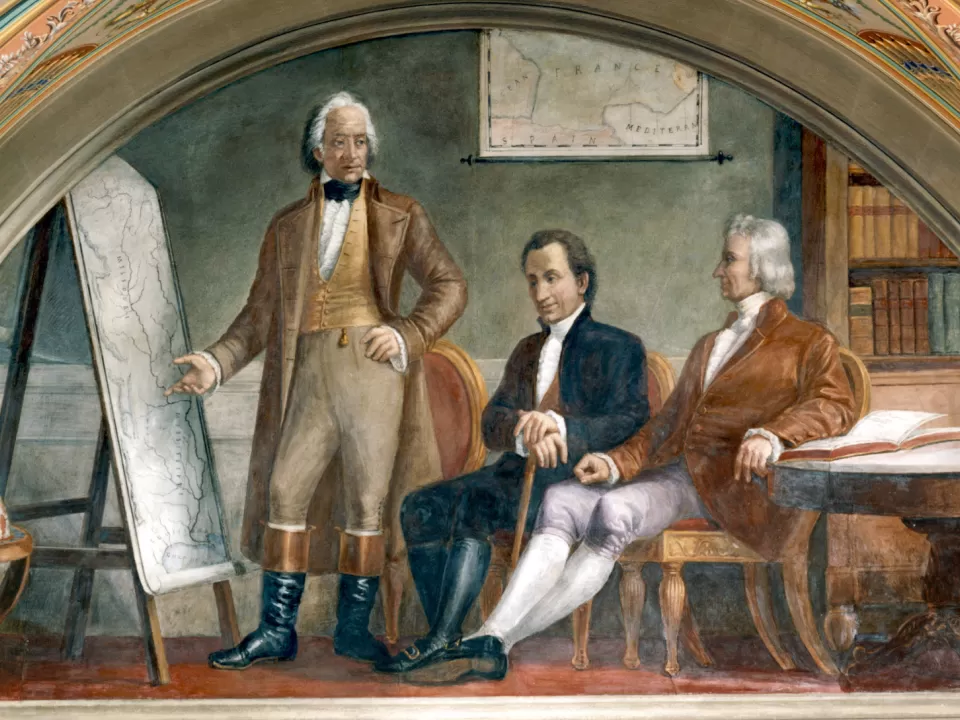
Senate Wing
The Brumidi Corridors are part of the wing of the U.S. Capitol constructed by Thomas U. Walter between 1852 and 1859. It is composed of five hallways, known as the main, west, inner, north and patent corridors.
Although Walter had envisioned plain-colored walls hung with a few oil paintings, Superintendent of Construction Captain Montgomery C. Meigs directed Constantino Brumidi to carry out an elaborate decorative scheme based on Raphael's Loggia in the Vatican.
Brumidi's classical training in Rome gave him a thorough understanding of ancient Roman, Renaissance and Baroque styles, symbols and techniques of wall painting. He began making designs for the corridors in 1856, and the painting of the walls and ceilings was carried out primarily between 1857 and 1859. Brumidi added details and scenes in the 1860s and painted frescoes in the lunettes over the doorways in the 1870s.
The ornate bronze railing of the stairways used by Senators at either end of the north corridor are composed of cherubs, eagles and deer entwined in leafy rinceaux that echo the wall decoration. They were designed by Brumidi, and Edmond Baudin sculpted them in Philadelphia. Archer, Warner, Miskey & Co. cast them, also in Philadelphia, and they were installed in 1859. Cleaning and conservation in 1988 restored their original antique bronze patina, and conservators cleaned and waxed them in 2014.
The ornately patterned and colored tile floors were manufactured by Minton, Hollins & Company in England. They were installed throughout the new extensions between 1856 and 1861. The encaustic tile, made of inlaid colored clays, was chosen for its beauty, durability and rich design, which complement the painted decoration of the corridors.

Senate Wing